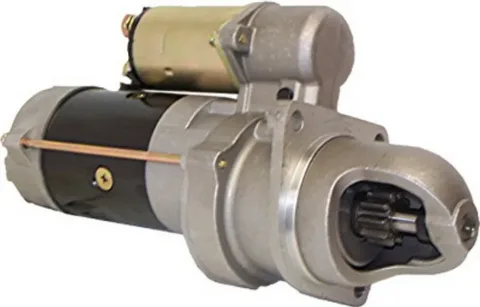Stability is paramount when constructing a retaining wall. One of the most effective ways to achieve this is through high-quality steel retaining wall posts Brisbane. These posts not only provide robust support but also enhance the structural integrity of the entire system. In this post, we’ll explore the benefits of using steel posts, how to choose the right materials, and installation tips to ensure your retaining wall remains sturdy and long-lasting.
Understanding the Importance of Retaining Wall Stability
Retaining walls are crucial in landscaping and civil engineering because they prevent soil erosion and manage water drainage. A stable retaining wall is essential for withstanding lateral earth pressure, which helps to prevent soil movement that could compromise the wall’s integrity. If stability is compromised, structural failure can occur, leading to expensive repairs and potential safety risks.
Choosing the right materials is vital for building a robust retaining wall. Steel retaining wall posts are particularly effective, offering unparalleled strength and durability. These posts can handle substantial loads and resist various environmental stressors, ensuring the wall remains secure over time. Properly installed steel posts distribute pressure evenly, reducing the risk of the wall collapsing or shifting.
Understanding the forces at play, including the weight of the soil and the impact of water drainage, is critical when constructing a retaining wall. Selecting high-quality steel retaining wall posts can significantly enhance the wall’s ability to withstand these forces.
Additionally, well-designed retaining walls improve the overall aesthetics and functionality of the landscape, providing both practical and visual benefits. Therefore, investing in durable, high-quality materials such as steel retaining wall posts is essential for maintaining the stability and longevity of your retaining wall.
The Advantages of Using Steel Posts in Retaining Walls
Steel posts offer numerous advantages over traditional materials like wood or concrete when constructing retaining walls. Their superior tensile strength supports heavier loads without bending or breaking, providing enhanced stability. Unlike wood, which can rot and succumb to pest damage, steel is inherently resistant to such issues, significantly extending the life of your retaining wall.
Steel posts are less concerned about weathering and environmental exposure, as they are designed to withstand harsh conditions without deteriorating. This durability translates into lower maintenance costs and fewer repairs over time. Steel posts can also be customised to fit various design requirements, with sizes and thicknesses available to suit your specific project needs.
Another key benefit is steel’s recyclability. Steel retaining wall posts can be recycled and repurposed, making them an environmentally responsible choice. This reduces the amount of waste in landfills and contributes to more sustainable building practices.
Additionally, steel posts facilitate easier installation compared to other materials. They can be precisely fabricated to fit the layout of your wall, ensuring a secure and stable fit. This adaptability is particularly beneficial in complex or uniquely designed landscapes where traditional materials might fall short.
By leveraging steel posts’ strength, durability, and customisation options, you can ensure your retaining wall remains robust and reliable for years.
Choosing the Right Type of Steel for Your Retaining Wall Posts
Selecting the appropriate type of steel for your retaining wall posts is vital to ensuring their effectiveness and durability. Two main types of steel are commonly used in such applications: galvanised steel and weathering steel. Galvanised steel is treated with a zinc coating that helps prevent rust and corrosion, making it an excellent choice for environments prone to moisture, such as coastal areas or regions with high rainfall. This protective layer significantly extends the lifespan of the posts, even in damp conditions.
On the other hand, weathering steel is designed to form a stable, rust-like appearance after exposure to the elements, which protects against further corrosion. This type of steel is well-suited for various climates and offers a unique aesthetic that can blend seamlessly with natural surroundings. When choosing between galvanised and weathering steel, it’s crucial to consider your project’s specific environmental conditions and load requirements. For instance, if your retaining wall is located in an area with high moisture levels or close to the sea, galvanised steel may be the better option due to its enhanced corrosion resistance. Conversely, weathering steel can provide durability and a visually appealing finish for projects in less harsh climates. Proper selection of steel type based on environmental factors and load-bearing needs will ensure your retaining wall remains stable and durable for years.
How to Properly Install Steel Retaining Wall Posts for Maximum Effectiveness
Proper installation is key to maximising the effectiveness of steel retaining wall posts. Begin by accurately marking the layout of your wall, ensuring that posts are spaced according to the wall’s height and load requirements—typically 6 to 8 feet apart. Next, dig holes for the posts, ensuring each hole is at least one-third the length of the post for optimal stability. It’s important to keep the holes uniform in depth to maintain a level installation.
Once the holes are prepared, position each steel post carefully. Use a spirit level to ensure the posts are vertically plumb. After positioning, fill the holes with concrete to anchor the posts securely in place. It’s crucial to allow the concrete to cure fully before proceeding to the next steps.
For added stability, consider backfilling the area around the posts with compacted gravel or soil. This helps support the posts and improves drainage, reducing the risk of water accumulation behind the wall. Installing a drainage system, such as weep holes or a perforated pipe, can further mitigate water build-up, enhancing the wall’s stability.
Following these precise installation steps ensures that your steel retaining wall posts provide maximum support and longevity.
Maintenance Tips to Ensure the Longevity of retaining wall posts Brisbane
Regular maintenance is crucial for ensuring the longevity of your steel retaining wall posts, especially in regions like Brisbane, which can experience varied weather conditions. Start by performing routine inspections at least annually. Look for any signs of rust, corrosion, or structural damage. Early detection of issues can prevent more extensive repairs later on.
Cleaning your retaining wall posts Brisbane is also essential. Remove any dirt, debris, or vegetation that may accumulate around the base, as these can trap moisture and promote corrosion. Clean the posts using a mild detergent and a soft brush to maintain their appearance and structural integrity.
Another vital maintenance step is applying protective coatings. Even if your posts are made from galvanised or weathering steel, additional protection can be beneficial. Consider using a rust-inhibiting primer and a high-quality paint designed for metal surfaces. This will provide an extra layer of defence against the elements.
Additionally, ensure that the drainage systems around your retaining wall function correctly. Poor drainage can lead to water accumulation, which exerts pressure on the wall and accelerates corrosion. Clear any blocked weep holes or drainage pipes and maintain a proper slope to direct water away from the wall.
Finally, tighten loose bolts or fittings and replace worn-out components to keep your retaining wall posts in optimal condition. Regular upkeep will help extend their lifespan and maintain the stability of your retaining wall.
Comparing Costs: Steel Posts Versus Other Retaining Wall Materials
When evaluating the cost-effectiveness of various retaining wall materials, it’s crucial to consider both initial expenses and long-term savings. Steel retaining wall posts might cost more upfront than timber or concrete alternatives. However, their extended lifespan and reduced need for repairs often make them a more economical choice over time. Timber, for instance, is susceptible to rot and pest damage, leading to frequent replacements and maintenance. Concrete walls, whilst robust, can develop cracks and erode, necessitating costly repairs.
On the other hand, steel posts offer unmatched durability and resistance to environmental stressors. They require minimal upkeep, and their ability to withstand harsh conditions means fewer repair expenses. Additionally, steel’s recyclability contributes to its long-term value, as it can be repurposed rather than disposed of, aligning with sustainable building practices.
Whilst timber might initially seem like a cheaper option, the cumulative costs of maintenance and replacement can quickly surpass the investment in steel posts. Concrete may offer a middle ground, but it still needs to improve in terms of longevity and resistance compared to steel. You can benefit from immediate and ongoing savings by choosing steel retaining wall posts, making them a financially prudent option for durable and stable retaining walls.
Real-World Examples of Successful Retaining Wall Projects Using Steel Posts
In Brisbane, many residential properties have successfully utilised steel retaining wall posts to stabilise slopes and prevent erosion, significantly enhancing the safety and appearance of the landscape. One notable example is a hillside home where steel posts were used to create a tiered garden, preventing soil displacement and adding a visually striking element to the property.
Commercially, steel posts have proven their worth in constructing robust retaining walls for car parks and public parks. For instance, a newly developed public park incorporated steel retaining wall posts to support elevated garden beds and walkways, ensuring they could handle the heavy foot traffic and environmental stresses typical of such areas.
In another case, a coastal community used galvanised steel posts to construct retaining walls capable of withstanding the corrosive effects of saltwater and high humidity. This project highlights the adaptability and resilience of steel posts in challenging environments.
These examples demonstrate the versatility and effectiveness of steel retaining wall posts in various real-world applications, showcasing their ability to provide lasting stability and aesthetic enhancement across different settings.
Conclusion
Steel retaining wall posts offer unmatched advantages in both residential and commercial applications. Their superior tensile strength, resistance to environmental stressors, and customisation options make them versatile for various projects. Whether combating soil erosion on a hillside garden or providing robust support for elevated walkways in public parks, steel posts consistently deliver reliable performance. Incorporating steel retaining wall posts into your construction plans enhances the structural integrity and durability of your retaining wall and adds aesthetic and functional value to the landscape.
Frequently Asked Questions
1. How deep should steel retaining wall posts Brisbane be installed?
Steel posts should generally be installed to a depth of at least one-third of their length to ensure optimal stability.
2. Can I use steel posts for curved retaining walls?
Steel retaining wall posts can be used for curved walls, but careful planning and precise installation are crucial to ensure proper support.
3. How often should I inspect my steel retaining wall posts?
Inspecting your posts at least once a year, especially in areas with severe weather conditions, is recommended to identify and address any potential issues early.
4. What is the average lifespan of steel retaining wall posts?
With appropriate maintenance, steel retaining wall posts can last several decades, often exceeding 50 years, making them a long-term investment.
5. Are there specific coatings I should apply to my steel posts?
Applying a rust-inhibiting primer followed by high-quality paint designed for metal surfaces can significantly extend the lifespan of your steel posts by protecting them from corrosion.
| Related Business Listings |
| Contact Directory |
| Local Business Profiles |




